Dyeing of cotton products. Dyeing fabric with natural dyes at home
Many of you have encountered this situation where the item is still wearable, but its dull color makes it unattractive. Yes, what can I say, the material looks washed out and faded. This can happen with both natural and synthetic materials. To return things to their original appearance, give them brightness and shine, or simply experiment with old clothes, fabric paint is used. With its help, you can remove defects or stains from the material, apply a design on a separate section of the fabric, repaint clothes in new color(for example: in indigo). The entire work process will not take much time and effort, and the result will depend on your imagination.
It is better to keep dyeing materials for fabrics in a dry, dark place, away from children.
What types of fabrics can be dyed?
If you decide to dye clothes from synthetic materials, you should not do this at home. Entrust such items to dry cleaning. Professional dyes are used for synthetic fabrics. You can work with them observing strict temperature and other conditions:
- Polyester does not absorb paint well. It is difficult to work with such material both at home and in dry cleaning. The color is faded and will wash off after a couple of washes.
- To dye nylon, you can use any powder chemical dyes. The fabric fibers easily absorb the coloring pigment. Cold dyeing is more suitable for raincoat fabric. That is, at home you can paint it yourself outerwear. At the same time, its color will be bright, uniform and indelible.
- Cotton, silk, linen, wool, half-wool, half-silk - easy to dye at home. The paint spreads evenly onto the fabric. Cotton (cotton) and denim products are the most amenable to dyeing.
- PVC material is used for banners and outdoor advertising. For its painting, acrylic dyes and varnish-based fixatives are used.
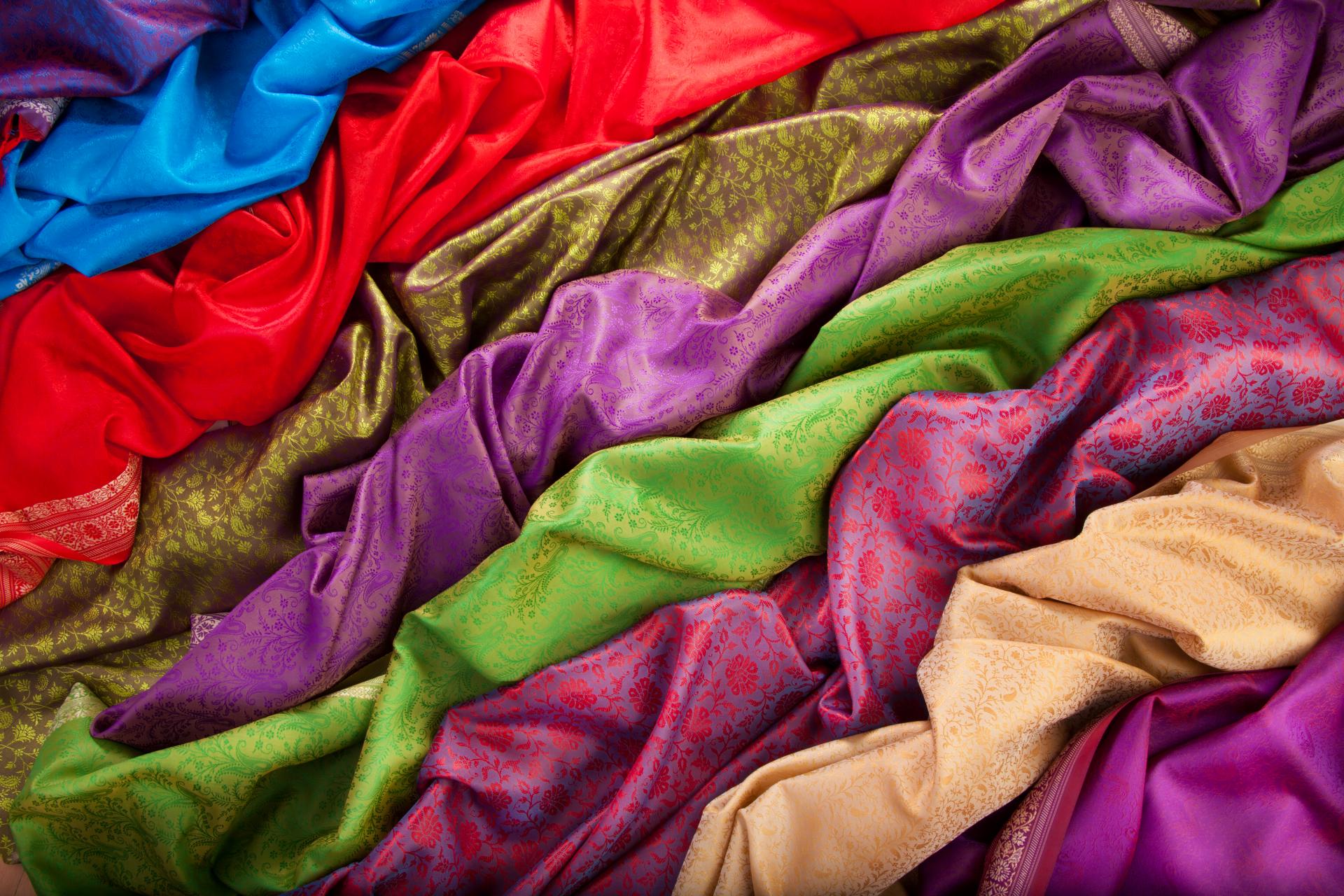
Types of paints
When choosing what to dye a fabric with, you should focus on the composition of the paint itself. This is how a chemical or natural dye is isolated. Let's look at their characteristics and main types.
Chemical dyes
This fabric paint is sold in hardware stores or on the market. It comes in the form of powder, paste or crystals. The most popular fabric dyeing products are called Dylon, Javana, Jacquard, Marabu. For more “jewelry” work, water-based paints and contour are used.
What is special about dyes from well-known manufacturers:
- Dylon paint– known all over the world. It's easy to use. It is described on the bag detailed instructions on coloring the material. If you follow all the instructions, the result will be rich, desired shade. Dylon fabric paints are ideal for hand dyeing, even without boiling. To ensure that the color lasts longer and does not wash out, immediately after dyeing, rinse the product in cold water with vinegar (ratio 1:2). Dylon is suitable for dyeing tulle, pieces of fabric, clothing made of wool, silk, cotton, linen.
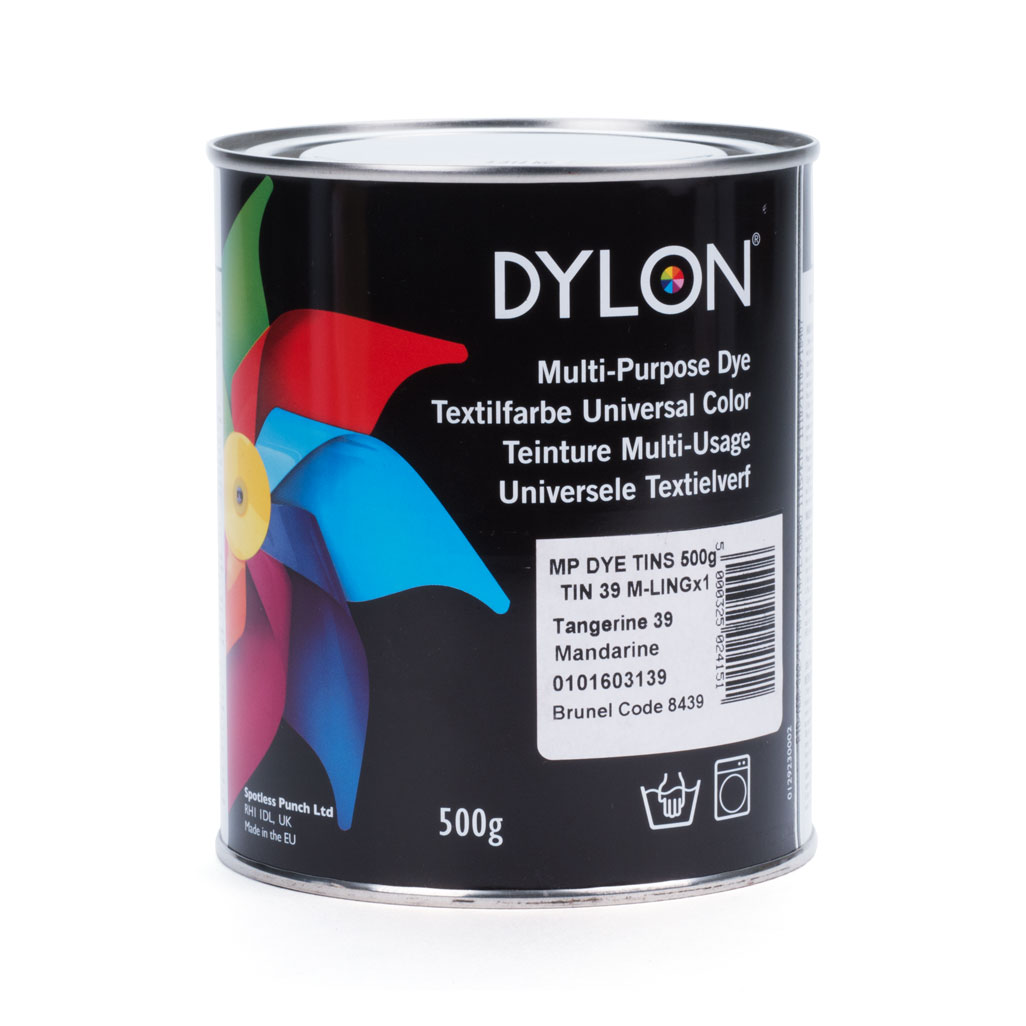
- Javana paint– used for painting on silk and synthetic fabrics. Applying a design or its outline will be easy with a thin brush. If you want to paint the entire piece, use an aerosol can or sponge. You can fix the dye with a hot iron, lightly ironing the product from the inside out for three minutes.

- Fabric paint jacquard (yakard)– Suitable for textile painting and airbrush work. The dye contains acrylic, and the material is evenly applied, colors the fabric well, penetrates deeply into the fibers, is non-toxic, and has a large color palette. If you want to paint, it will be more convenient for you to purchase a set acrylic paints on fabric. Suitable for PVC materials.
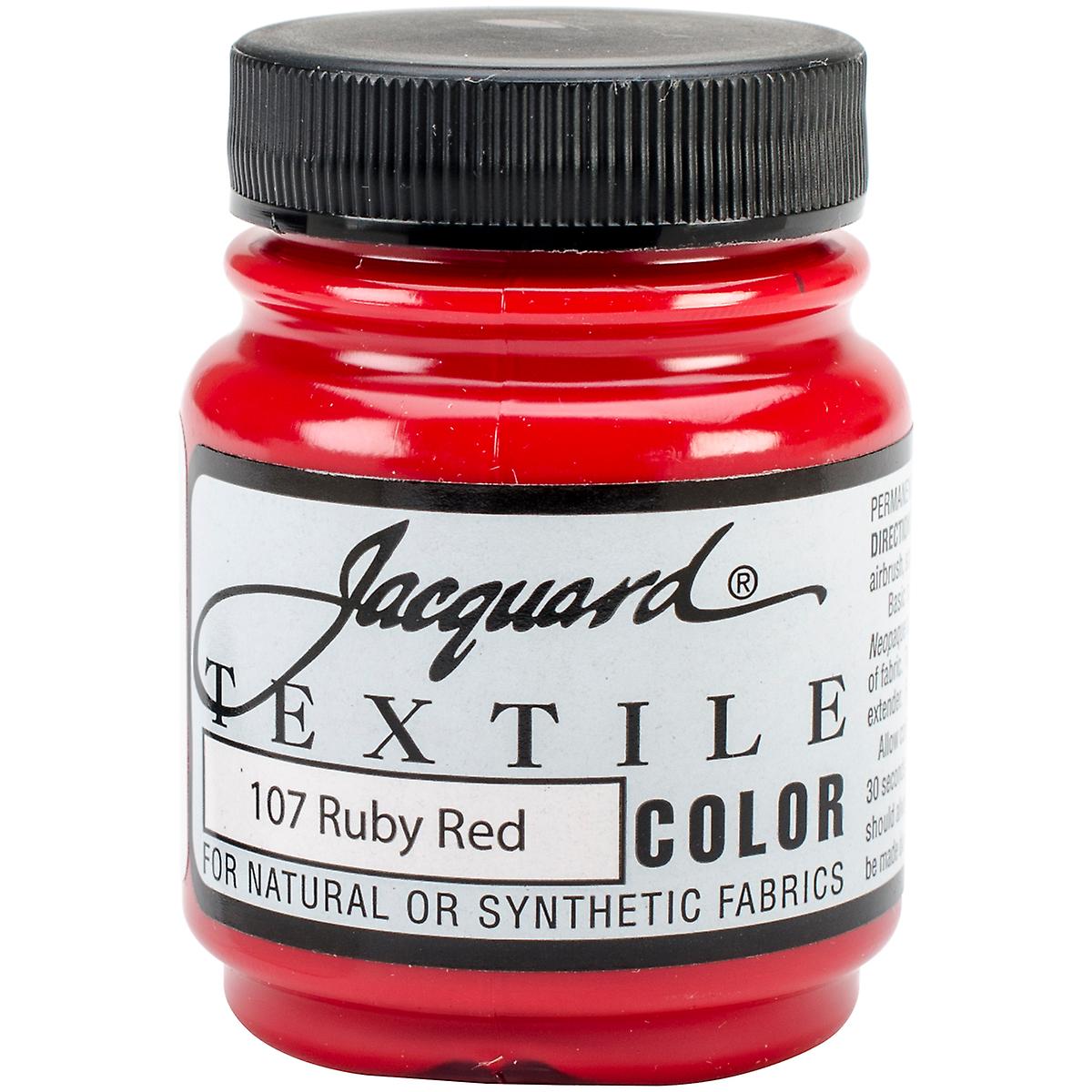
- Marabu paints (marabou)– used both for manual dyeing of fabrics and for dyeing in washing machine. Suitable for linen, viscose, cotton, mixed fabrics and PVC fabrics. Not recommended for dyeing synthetic and woolen materials.

- Water-based inks – designed for screen printing on synthetic and natural fabrics. Today this is the most popular decoration method. During the dyeing process, a silk-screen printing effect is achieved. It is necessary to take light-colored material as a basis. The ink for silk-screen printing must be fluorescent, water based with a reflective effect, but does not contain PVC particles. Using a stencil you can apply a pattern to fabric. To prevent the resulting decoration from being washed off, iron the product after drying.

If you need to outline your design or draw something on fabric, take a small tube filled with water-based or acrylic paint with a sharp tip. As you work, the lines will turn out smooth and thin. And all thanks to the fabric outline. You can fix the design with an iron by ironing the fabric from the inside out for three minutes.
Advice! If, when dyeing fabric, you want the result to be bright and saturated color, use light-colored material.

Regardless of the type of dyes, they contain a small part of chemical additives, such as acrylic, aniline, etc. Of course, such paint has many advantages: it does not wash off, is easy to apply, and has a huge color palette. However, most people do not use them so as not to damage the product and also not to provoke an allergic reaction.
On video: Decola fabric paints, master class.
Our grandmothers used them as dyes natural materials. They were called "natural dyes". These include: berries, vegetables, spices, herbs, etc. With their help it was also possible to achieve the desired result.
What is a natural dye:
- Yellow color can be obtained by using wormwood, turmeric, carrots, and orange zest for coloring.
- You can get indigo color by using turmeric and fresh spinach juice for dyeing.
- If you need a gold or orange color scheme, you need to use orange zest or celandine when dyeing.
- Will give a brown tint to the material onion peel, tea, coffee, oak bark, henna, cinnamon.
- With the help of coffee, it is possible to achieve a black or gray tint.
- The process of dyeing fabric with beets, blueberries and elderberries produces a red tint.
- In order to achieve of blue color, use blackberries, sage, red cabbage.
- Use bearberry and broom to create a natural gray paint.
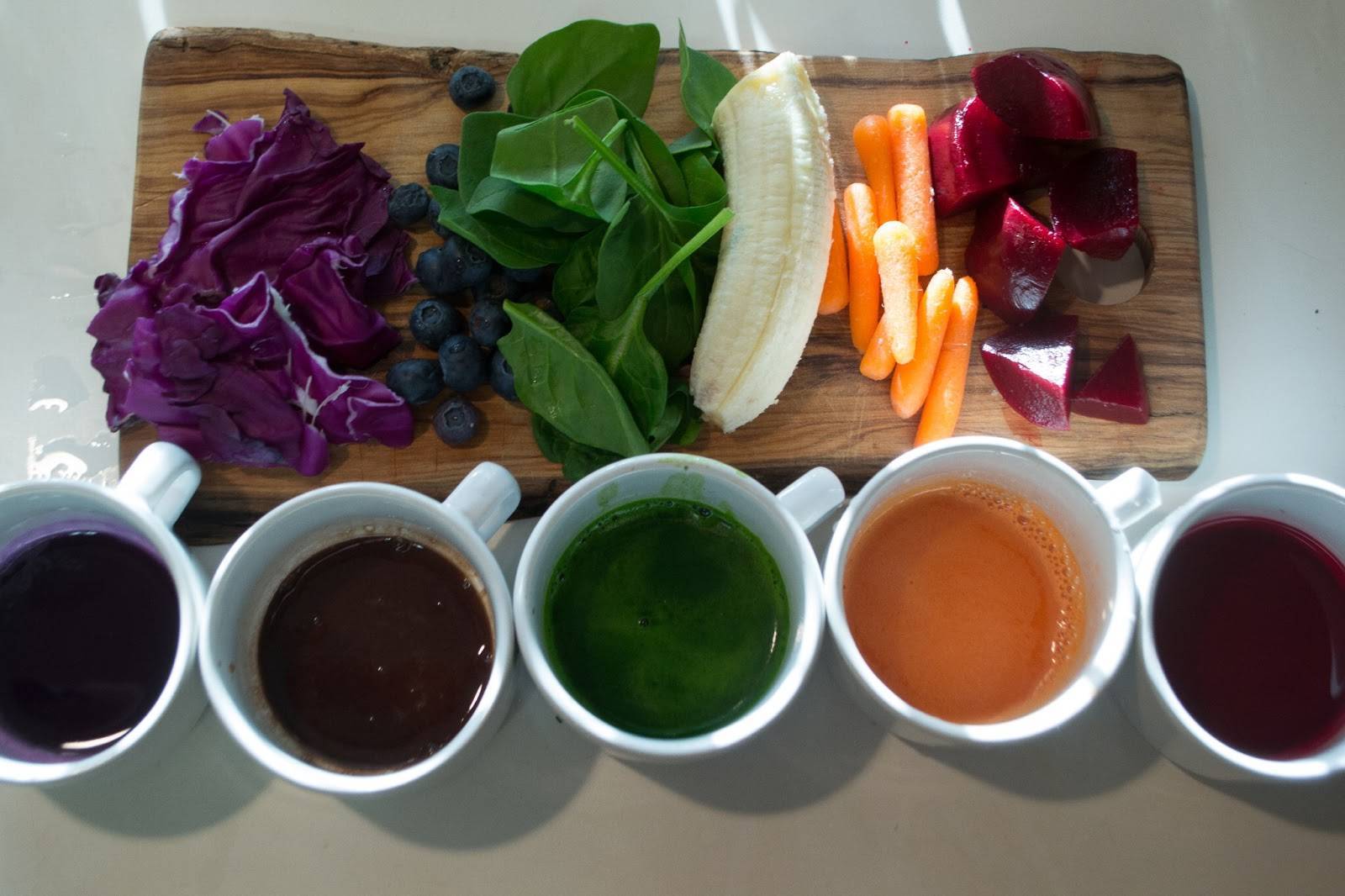
Preparing material for painting
Surely many of you have used fabric paints at home, but not everyone knows that before you start dyeing, the material must be put in order, that is, prepared. Namely:
- If the fabric or item is heavily soiled, wash it to remove stains. It is not necessary to dry the material, since it is better to paint it wet.
- Remove all accessories from the product so that the paint does not get on it and the fabric is evenly colored.
- Pre-weigh your clothes. This way you will know exactly how much paint you will need.
Dyeing technology
So, the fabric is prepared, the paint color is chosen, and your imagination is turned on at full capacity. Let's begin! Let's look at two ways to dye fabric with chemicals and natural dyes at home.
Purchased paints
The first method is in the washing machine
For one kilogram of fabric you will need textile paints, one bag. Place the items in the washing machine drum and add 2 tablespoons of baking soda to make the water softer. Set the temperature to 40 degrees. Dilute the paint in one liter of water until completely dissolved. When the machine finishes drawing water, pour the prepared solution into the powder hole. Leave the product until the end of the wash cycle.

The second method is manual
For this you will need an iron pan or bucket. If clothing and fabric dye does not require boiling, you can use an iron bowl. Wet the material and twist it out. Add three tablespoons of salt to the water so that the paint colors the product well. The packaging indicates how long the fabric should be kept in water.
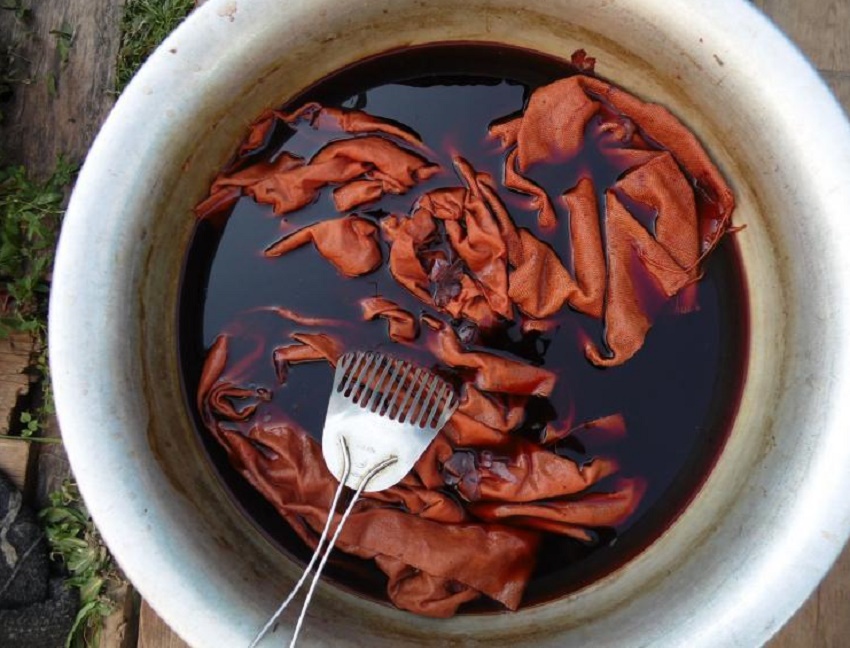
The final step in both methods will be fixing the color. If the packaging does not describe how to fix the paint to the fabric, use the old proven method. Add to cold water vinegar and leave the product for five minutes. Now rinse thoroughly and leave to dry.
Using natural dyes
For cooking coloring decoction take 200 g natural material and pour in 2000 g of water, boil for two hours. Of course, you won’t be able to use paints for silk-screen printing, but you can give natural fabrics new colored shades. Now add 10 g of alum to the boiling broth for every 50 g of tissue, leave to boil for a few more minutes, then remove the pan from the heat and let it sit until it cools completely.
If the color is very pale, you can boil the fabric in the solution for another hour. Afterwards, rinse the material in cold water and vinegar to obtain a permanent texture. In this way, you can dye natural materials or wool blends, but not synthetics and PVC fabric. Don't be afraid to experiment. With the help of painting, many old things can get a “second life”.
We offer an option on how to dye an old T-shirt:
- Take the threads under wrong side T-shirts, place a button, and with front side wrap it with thread.
- In a chaotic manner or in a certain sequence, make several knots from the fabric.
- Now dip each one in turn into the paint and leave to dry. The T-shirt must be white, and the nodules can be painted in different shades from pink to indigo.
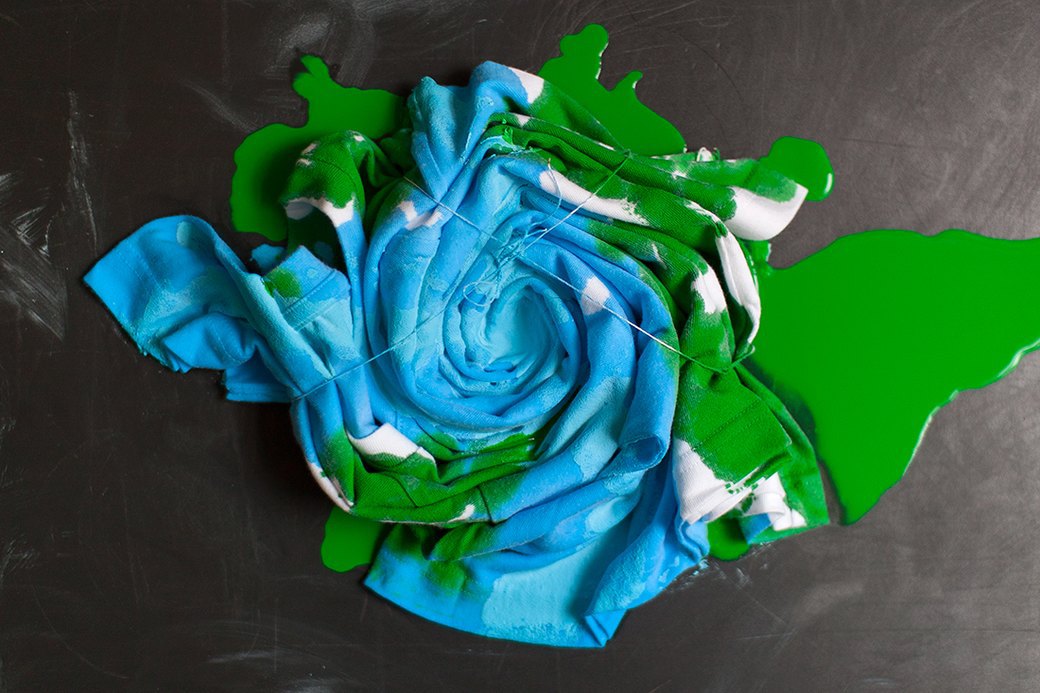
Straighten the thing, you have a “sun with rays”. If desired, you can outline them. This technique is called Tie-Dye.

You can dye any product: jacket, pants, dress, whatever. The main thing is to know how to paint and choose the right coloring composition. As you can see, everything is very simple, and then your imagination.
Dyeing clothes at home (1 video)
After rummaging around in different stores, strolling through the Internet, it suddenly dawned on me - shouldn’t I dye the fabric myself?! And here the most interesting thing began, I would never have thought that dyeing fabric and various rags could be so exciting and involve you in the process. After all, during the process you can never know with perfect accuracy what shade you will get in the end. The color turns out to be uneven, depending on how the fabric is laid - somewhere brighter, somewhere paler, somewhere there are specks from fallen berries. But this makes the result even more beautiful, more naturalistic, more original; such fabric exudes warmth and nature. Plus different fabric it is colored differently, the exposure time in the solution also affects the intensity of the shade, and something else mystically and mysteriously also affects :)
On the Internet you can find a lot of information about how to dye fabric with various roots, inflorescences, tree bark, and grass. But in practice, it can be very difficult to find them, and even in early spring. So I will share with you the most simple recipes, I found all the ingredients at the grocery store.
It should be noted that I only painted natural fabrics white - linen and cotton.
I liked painting with berries most of all; they give the most intense colors. Vegetables give more pale colors, you need to keep it in the solution longer.
So, in order.
1. Purple- these are blueberries, you can add cranberries.

2. Orange color- bright, warm color gives color in turmeric, can be replaced with curry powder.
3. Pink color- cherries and cranberries. If you add beet juice to cherries or cranberries, you get a slightly different shade of pink. You can only use beet juice - it gives a slightly dirty shade of pink. It all depends on your imagination and capabilities.

4. Blue color - I got it from red cabbage.
5. And green color- it came from spinach, although I would like it to be brighter, but for this you need to try other dyes.
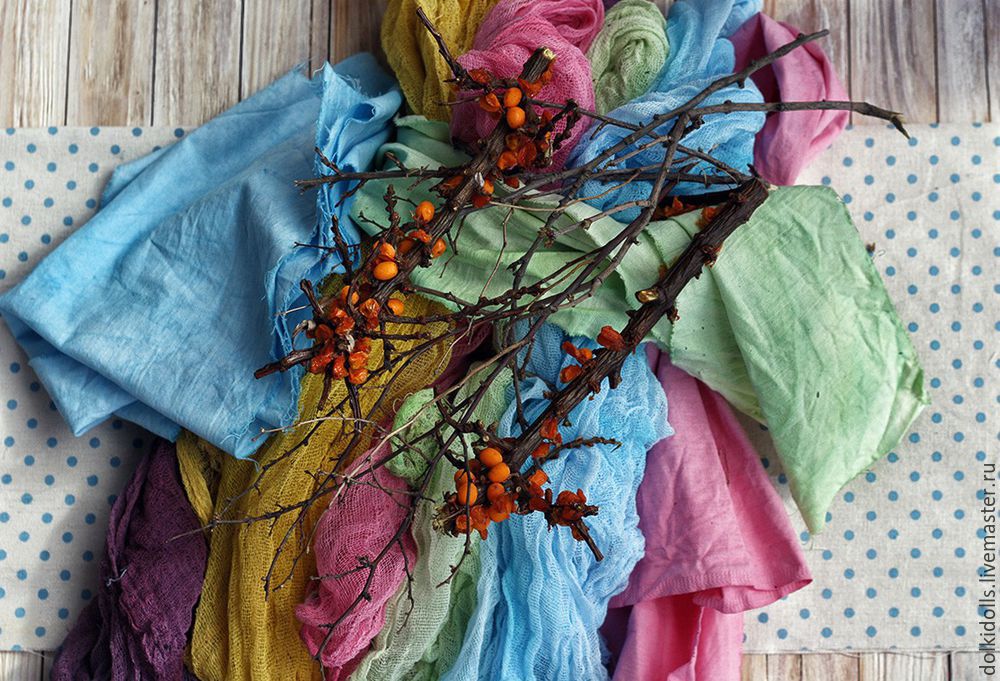
Now I’ll tell you about the recipe itself and proportions. I always do everything “by eye”, I don’t measure anything. I add berries and crush them a little to release more juice. If it's beets, then grate them. And I fill it hot water. If it’s curry powder or turmeric, I just pour it into the water. Accordingly, the more coloring element in relation to water, the brighter color. To fix the color, I add a spoon or two of table vinegar. I'm immersing the fabric. And I leave it for several hours, stirring occasionally.
That's the whole secret :) I hope you find it useful.
P.S.: fabrics dyed this way, and especially gauze, are also beautiful to use for photography, for backgrounds, and so on.
In order to refresh the color of your favorite item or save a damaged one, you can use dry cleaning services, which offer quick and safe dyeing of clothes. But it is not at all necessary to take the item to a specialized institution and pay a lot of money for their services. Many types of textiles can be dyed yourself at home.
It is easiest to dye items made from natural fabrics such as wool, etc.
This cannot be done with synthetics at home, as they require special conditions, which will simply be impossible to maintain at home, and the dye will remain only on the surface, giving the product a light tint. Subsequently, during wear, such clothes will stain the skin, linen, other items of clothing in contact with them, and furniture upholstery, and during washing they will “fading”, staining other things as well.
- Before starting the procedure, carefully read the fabric composition on the label and make sure that the product is natural.
Keep in mind that some unscrupulous manufacturers may incorrectly indicate the composition, so you should not paint things purchased at the market or in other unverified places.
- Remember that a “pure” color will only work on white items.
- Colored clothes You can paint it either tone-on-tone or darker shades.
- Be sure to take only clean products. If they have traces of organic dirt (stains from food, blood, etc.), be sure to wash them first.
- Stubborn stains will be painted over, but not completely evenly. Most likely the shade will be different, and the mark will remain noticeable.
- Be careful when working with paints and large containers of hot water. Wear gloves and try to protect as much as possible all objects in the room in which you will work. You can cover the furniture with cellophane film and lay oilcloth or paper on the floor.
- The first few times after painting items, do not wash them with other items. If the dye is unstable, it will wash off and stain the water, and with it the rest of the laundry.
Types of dyes
It is necessary to distinguish between two concepts - dye and pigment. Dyes are substances that, under certain conditions, interact with fiber and change its color. Pigments are only fixed on the surface of the fabric using chemicals, without reacting with its fibers.

There are two main groups of dyes: synthetic and natural. In the textile industry, synthetic ones are mainly used. For home use They are produced in the form of powder, liquid or crystals.
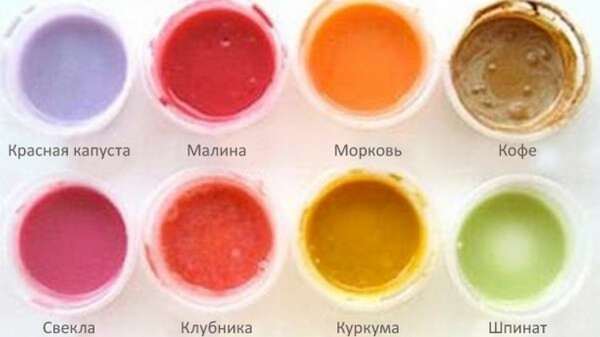
It is better to buy a substance intended for a specific type of fabric - wool, cotton, or synthetics. There are also universal ones that are suitable for all types, but they are less stable.
What you will need
Before you start, prepare everything you need:
- the dye itself;
- vinegar or lemon acid(or soda/salt);
- two large containers, one enameled;
- cup;
- wooden clothes tongs (these were previously used for boiling) or a long wooden spatula.
Dyeing process
Each type of dye has its own dyeing technology. The manufacturer must provide detailed instructions on the packaging.
Wool
To color wool yarn or products made from it, it must first be soaked in water.
- Pour the contents of the package into a small cup, dilute warm water(500 ml), mix thoroughly and strain through several layers of gauze into a large enamel bowl.
- Do not forget to correctly calculate the proportions, as indicated by the manufacturer. Typically this is 10 g of powder per 500 g of dry material.
- Add as much water as is sufficient for the solution to completely cover the product.
- Add 2-3 tablespoons of vinegar.
- Immerse the product in the solution and place it on the stove.
- Heat over moderate heat for 40 minutes, without boiling.
- Then turn off the heat and leave the product in it for another half hour, then carefully remove and rinse thoroughly in warm water.
At correct coloring the dye, which has not interacted with the fibers, is washed off during the first rinse, and the item does not “fade” during washing.
Cotton, linen, viscose
- Dilute the contents of the package in a small cup of warm water (500 ml), mix thoroughly and strain through several layers of gauze into a large enamel bowl.
- Add water so that the solution completely covers the product.
- Immerse the pre-soaked product in the solution and place it on the stove.
- Heat over moderate heat for 30 minutes, without boiling.
- Stir gently occasionally.
- Add 200 g of salt.
- After 10 minutes, turn off the heat and leave the product in the solution for another half hour, then carefully remove it and rinse thoroughly in warm water with the addition of 2 tablespoons of vinegar.
- Hang to dry away from direct sunlight.
It is necessary to soak things before dyeing so that the dye solution is evenly distributed in the fibers. Then the color will be even and equally saturated.
Dyeing in the washing machine
![]()
Convenient if you are dyeing a lot of clothes or a large item that is difficult to place in a container and place on the stove.
- Dilute the paint and pour directly into the drum. On some types, the instructions indicate that it can be placed in the drum of the machine, without spreading it, directly in the bag.
- Choose the longest wash cycle without soaking, the water temperature should be about 50 degrees (depending on the composition of the fabric). It is also desirable that in the selected mode there is maximum amount water.
- After painting, rinse the items in a vinegar solution.
With the help of dyes, you can not only refresh your favorite thing at home, but also radically transform it - repaint it into a new one. bright shade or do . Choose the right dye according to the type of fiber and experiment, taking precautions.
Before dyeing, fabrics and products must be cleaned of stains and washed.
First you need to remove the layer of starch from new cotton and linen materials that is present on them. This is achieved by boiling in a soap-soda solution for 30 - 45 minutes. After boiling, the material must be rinsed well in water until the soda and soap are completely removed.
Old stains must be removed with special compounds. Residues of the stain removing composition must be removed by washing and ironing the areas that have been cleaned. Failure to follow this rule may result in uneven coloring of the fabric.
If there are still dark stains that have not been removed (for example, from ink), it is recommended to repaint the material only in a very dark or better black color, because usually such stains cannot be covered when painted in light colors.
Metal buttons and decorations must first be removed from finished items to be dyed to avoid the formation of rust stains.
To prevent it from getting tangled, the yarn should be dyed in separate skeins, tied in several places. It is recommended to string all skeins onto a piece of thin rope. This will make it easy to turn them over while dyeing.
Preparing dishes and water for dyeing
The container in which you are going to paint must be completely clean. It is best to paint in enamel dishes.
Galvanized or aluminum utensils should be thoroughly descaled before painting.
The container must be such that the material can be freely placed in it without crushing it, and so that it is covered with the dyeing solution during the entire dyeing process. This makes it easier to achieve even coloring.
In addition to the dishes, you need to prepare two wooden sticks, which will have to be used to turn the material to be painted. The sticks must be smooth, without knots, so as not to damage the material, and strong enough to lift the material from the dye bath.
Dyeing is best done in soft rain or snow water. Very hard water should be softened by adding 1 tsp. baking soda or 1 tbsp. l. ammonia for 12 liters of water.
How to choose a dye for dyeing fabric
Before choosing a dye, you need to know exactly what textile material the product is made of. To do this, pull out a small thread along and across the fabric (warp and weft) and set it on fire with a match. Cotton, linen and rayon burn well and give off a burnt paper smell. Wool burns poorly; a black caked ball forms at the end of the thread, which smells like burnt horn. Natural silk also burns poorly.
Universal or special dyes, which dye any textile materials equally well, are applied to fabrics made from different textile materials; they are called mixed (half-wool, half-silk, etc.).
The choice of dye of the desired color depends primarily on what material is to be painted: white or colored. When dyeing white material, the color that is indicated on the dye label is obtained. If colored material is dyed, its color can sometimes differ sharply from the color indicated on the dye label.
Remember that when painting colored material, it always turns out more dark color than before dyeing.
It is recommended to dye dark-colored material either in the same but darker color (for example, brown - in dark brown, blue - in dark blue, etc.), or in black, since when dyeing dark fabrics in other colors The result is ugly, dirty shades.
The black color covers all the others, but takes on a shade of the color of the material that is being repainted.
If you take more dye or less than normal, you will get a lighter or darker color.
When updating the color of worn, faded clothing, you should use a smaller amount of dye than when dyeing white material (depending on the degree of fading).
Fabric dyeing technology
The stained and washed material should be soaked in warm water just before dyeing, squeezed thoroughly, straightened thoroughly and then dyed. Pre-soak The material protects against uneven coloring when dyeing.
Materials and items made of natural and artificial silk and staple fiber, as well as all thin fabrics, cannot be twisted during spinning. It is better to squeeze such materials and things firmly between your palms.
The material, previously soaked in water and wrung out, is immersed in a dye solution and dyed depending on the type of material.
When laying, the material should lie freely. Under no circumstances should you crush it, as this may cause stains and streaks.
During dyeing, the material should be turned as often as possible. To do this, fabrics or products are lifted with one stick and lifted above the vessel, and the folds are slightly straightened with another stick. Then, with the same stick, the fabric or product is hooked at the other end and lowered back into the bowl.
Skeins of yarn strung on a rope (the ends of which should lie on the edges of the dish when dyeing) are pulled out by picking up both ends, then the individual skeins are leveled with a stick and put back into the dish. In this case, you need to make sure that the rope does not fall into the dishes.
It is imperative to straighten folds when dyeing fabric, otherwise stains may result.
Dyeing of cotton, linen and artificial silk products
Add table salt to the prepared dye solution (multi-purpose fabric dye) (1 tablespoon (30 g) for each packet of dye) and stir well until the salt is completely dissolved. Then the material, previously moistened with warm water, is immersed in the dyeing solution, the solution is gradually heated to a boil and painted for 20 minutes at a low boil, turning the material all the time. This is usually done when dyeing white material or when dyeing colored material in dark colors.
When dyeing in light and medium tones, table salt (for greater evenness of coloring) is added half an hour after the start of dyeing. To do this, lift the material to be dyed with a stick, hold it over the dye bath, add salt, stir, lower the material back into the dye bath and continue dyeing at a boil for another 10 minutes.
Cotton fabrics with added polyester look lighter after dyeing, since polyester is not dyed.
Artificial silk material and products are dyed in the same way, but the dye solution is heated not to a boil, but to a temperature of 60 degrees (as the hand tolerates) and table salt do not add. Then stop heating and paint for another 20 minutes in a cooling dye solution, turning the material all the time. After this, the painted material is removed with a stick, the liquid is allowed to drain and rinsed well in cold water.
Dyeing of wool and woolen products
Add 1 tbsp to the prepared dye solution (for each dye packet). l. vinegar essence or 1.5 cups table vinegar. Then the dye solution is stirred well. After this, the material, previously moistened with warm water, is immersed in the dyeing bath, the dyeing solution is gradually heated to a boil, turned off and painted for 10 minutes, turning the material all the time.
Typically, when dyeing white wool, almost all the dye is taken out of the dye solution (the solution becomes slightly colored). If after the required dyeing time the dye is not completely removed and the material is not sufficiently colored, you should add another half amount of vinegar and dye for another 10 minutes. The colored material is cooled in the solution.
After this, the material is removed with a stick from the dye bath, the liquid is allowed to drain and rinsed well in cold water.
How to dye natural silk fabrics
Add 1 tbsp to the prepared dye solution for each dye packet. l. (30 g) table salt and stir well until the salt is completely dissolved.
After this, the product, previously moistened with warm water, is immersed in the dye solution, gradually heated to a boil and painted for 15 minutes at a low boil, turning the product all the time. Then stop heating and paint for another 10 minutes in the cooling dye solution, turning continuously.
After this, the product is removed, the liquid is allowed to drain and rinsed well in cold water, and then in a weak solution of vinegar essence (1 tablespoon of vinegar essence or 250 ml of vinegar per 5 liters of water). When dyeing silk materials, you need to remember that silk requires twice as much large quantity dyes than other materials.
How to process the material after dyeing
The painted material should be rinsed well in cold water, changing it several times until it remains clean. After rinsing in cold water, it is recommended to rinse the painted product in warm water.
After rinsing natural silk in clean cold water, rinse itse in cold water adding 1 tbsp for every 5 liters of water. l. vinegar essence or 1.5 glasses of vinegar.
The better you rinse the dyed material after dyeing, the less it will fade during subsequent washes and will not stain the laundry.
The washed material must be squeezed out as best as possible. Thin fabrics and things made of artificial and natural silk should not be twisted, but should only be squeezed firmly with your palms and then dried in the shade.
Woolen and silk items should not be hung to dry, as this will cause them to stretch and lose their shape, and may cause streaks. They are rolled up in a clean towel or sheet and wrung out several times in this form. The wrung-out item is laid out on a table or on a bed on a white mat and stretched into shape and correct size. In this position the item is left to dry.
Cotton materials and items should be ironed wet on the front side with a hot iron. Woolen and silk materials and products should be ironed in a slightly damp state from the inside out with a moderately hot iron (for wool and natural silk no higher than 150-160 degrees, for artificial silk - no higher than 120-130 ° C).
How to dye embroidery thread
Regular aniline dye should be taken on the tip of a knife, stirred in a glass of warm water and boiled. Dip dry floss threads into the solution and dye to the desired shade.
To create a full range from light to dark tones, the threads are kept in solution different time- from a few minutes to half an hour.
To fix the color, dyed threads are dipped in a salt solution (1 teaspoon of salt per 200 ml of water) and boiled for half an hour, and then placed in cold vinegar for half an hour.
Glycerin restores color after fixing in vinegar, as the threads change their color - they turn pale. After vinegar, the threads should be rinsed and dipped in a glycerin solution for half an hour (5 - 6 drops per glass of water).
Discoloration of dyed fabrics. Fabrics dyed with aniline dyes can be decolorized with the following solution: hydrosulfite - 4 parts, 30% acetic acid - 4 parts (or formic acid - 85 parts).
Dissolve hydrosulfite in water heated to 50 °C. Add acid in very small portions until the flour-milk-colored liquid clears up immediately. This solution, when boiled, discolors the fabric within 0.5-1 hour, after which the fabric is thoroughly rinsed.
Dyeing and bleaching of threads
For dyeing, the threads are cut or wound into skeins, depending on how long the ends are needed for the job. Less often painted finished goods. It should be taken into account that threads shrink when dyed.
Individual fragments of woven fabric can be tinted with a brush using aniline dye diluted in small quantity hot water(color is first checked on a sample).
Before dyeing, the skeins are loosely tied in three or four places with strong light thread (so as not to fade). Then they are left in water for several hours (preferably in rain or snow). They paint in a large enamel basin or tank. In order for the threads to dye evenly, the dye solution must completely cover the skeins.
A solution of aniline dye is prepared as follows: pour the dye into a glass half-liter jar and fill it with a small amount of hot water (1/3 of the jar), stir well and add the same amount of hot water (be sure to wear rubber gloves when working with the dye).
If you need a rich color, then take one and a half to two packs of dye for 500 g of threads; if a light shade is needed, then for the same number of threads, use very little paint on the tip of a knife. However, in pastel shades can be painted only white or very light threads. The darker natural color, the more difficult it is to give the threads a new shade.
If the threads are mixed, then use two dyes of the same color at the same time - for cotton and synthetic fibers.
The dye solution is poured through three layers of gauze into a tank of water heated to a temperature of 30 - 40 degrees (no more). Thread a strong light rope through the wet skeins and lower them simultaneously into the tank, leaving the ends of the rope on the edge of the dish. Heat the skeins for 5-10 minutes, stirring continuously, then remove them from the tank by the ends of the rope and pour half of them into the tank. saline solution(2 tbsp salt per 1 packet of dye). The skeins on the rope are again lowered into the tank, brought to a boil and boiled for 10 - 15 minutes over low heat, then removed and the rest of the saline solution is added. Mix the solution thoroughly, dip the skeins into it and boil for another 15 - 20 minutes. Then remove the tank from the heat, but do not remove the skeins until the water cools. After this, they are rinsed in warm water with the addition of table vinegar (1 tbsp per 1 liter of water).
Another recipe for dyeing cotton and linen threads. In this case, the dye solution is heated, cooled slightly and dry skeins are dipped into it. Stirring, keep them in the solution for about 30 minutes, depending on the desired color intensity. The dyed skeins are transferred to a second warm solution (1 teaspoon of salt per 1 glass of water) and boil, stirring, for 30 minutes. Then immerse for 30 minutes in a third warm solution (1 tablespoon of vinegar per 1 liter of water). The threads in vinegar will become paler, and in order for the color to be restored, they are placed for 30 minutes in the fourth solution (5 - 6 drops of glycerin per 1 glass of warm water).
Dyeing with natural dyes (the amount of dye is indicated per 100 g of threads)
Any liquid from the following is suitable as a mordant: vinegar, brine or tartaric acid (1 tbsp per 1 liter of solution).
Beige color. 200 - 300 g of dry birch leaves are soaked for a day in cold water (1-2 liters of water per 100 g of leaves) and then boiled in the same water for 15 - 20 minutes. The broth is filtered into a dyeing container, a mordant is added, wet skeins are dipped into the solution and boiled for an hour over low heat, stirring continuously. After this, the threads are left in the solution until completely cooled, and then rinsed in warm water and dried.
Yellow. 100 g of dry onion peels are soaked for 7 hours in 3 - 4 liters of water. The infusion is filtered, heated, a mordant is added, wet skeins are dipped into it and boiled over low heat for 2 hours, then rinsed and dried. The color of the threads turns out to be reddish-yellow if the dyeing was carried out without a mordant.
Brown color. Used as a dye fir cones who spent the winter under the snow. They should be raw and red inside. 1.5 kg of crushed raw cones are poured into 6 -7 liters of water and boiled for 4 hours. The broth is filtered, the fixative is dissolved in it and the threads are boiled in the resulting broth for 30 minutes, then the threads are rinsed and dried.
Fabric bleaching . A simple way to bleach is to heat the threads in a soap solution. Wet skeins of unsuccessfully dyed threads are dipped in warm soapy water and, stirring continuously, heated (but not boiled). From time to time, the solution is drained and replaced with a new one until the threads acquire the desired color.
Another recipe. For 1 liter of water take 5 g of 3% hydrogen peroxide and 1 g of ammonia. The skeins are soaked in water with the addition of baking soda or ammonia (20 g per 8 liters of water), dipped in the solution for 30 - 40 minutes and then thoroughly washed in clean water. Before the last rinse, add 9% to the water. table vinegar(1 tbsp per 1 liter of water).
What colors are obtained when mixing paints?
Mixing colors |
Resulting Color |
||
Yellow and red |
Orange |
||
Purple and red |
Red-violet |
||
Blue and red |
Violet |
||
Green and red |
Brown |
||
Gray and red |
Dark red |
||
Purple and yellow |
Olive brown |
||
Blue and yellow |
|||
Gray and yellow |
Pea |
||
Yellow and green |
Light green |
||
Purple and green |
Greenish brown |
||
Blue and green |
Blue-green |
||
Brown and green |
Olive |
||
Gray and green |
Gray-green |
||
Purple and blue |
Blue-violet |
||
Brown and blue |
Dark brown |
||
Gray and blue |
Gray blue |
||
Brown and purple |
Dark brown |
||
Gray and purple |
Gray-violet |
||
Yellow and brown |
Yellow-brown |
||
Red and brown |
Red-brown |
||
Gray and brown |
Brown |
||
Red and purple |
|||
Red and blue |
Lilac |
||
Blue and yellow |
Salad |
||
Defects in the painting of products, their prevention and elimination
In some cases, items may be unevenly or insufficiently colored, have stains, change color due to washing, friction, light, etc.
All these types of defects arise from poor preparation of the fabric for dyeing, incorrect choice of dyes, failure to comply with proper conditions during dyeing and insufficient washing of the fabric. The defect also depends on the condition of the fabric (worn, abraded, damaged by various caustic substances, etc.). Excess dye and its poor solubility, the use of hard water, shortening the painting time, non-compliance with temperature conditions, lack of fixation (for some dyes) reduce the color strength. Deficiencies can be partially eliminated by additional rinsing, washing with soap or other detergents.
♦ For worn items, it is necessary to use those dyes that have good leveling ability. Uneven coloring occurs when the dye solution is heated too quickly, more high temperature than is required for a given dye, insufficient mixing of liquid and things, with a small amount of dye solution, floating of products, loading them in a dry state, etc.
♦ If things are poorly rinsed after dyeing and left unwrung, streaks appear, giving uneven coloring on the drying parts.
♦ Stains on things are formed from contaminated utensils used for dyeing, when folding items together, the color washes away, etc.
♦ If a lot of things are loaded into the tank, they are painted in a compressed state, which results in folds and wrinkled places that are difficult to straighten out and sometimes cannot be smoothed out. This kind of marriage is called a marriage. Creases can also appear when things cool quickly during rinsing, if immediately after painting they are immersed in cold water.
♦ To remove creases, the products are moistened with hot water with a small amount of ammonia, dried in a stretched state and ironed with a heavy iron.
♦ Stains caused by uneven painting wool fabric, can sometimes be removed by boiling in a solution of sodium sulfate (Glauber's salt).
♦ When rinsing fabric after dyeing, you need to check that excess dye has been removed, otherwise things will stain the laundry.
Even with the most careful attitude to things, over time under the influence of sun, air, water, synthetic detergents they lose their original color. This can bring grief to their owner. In order to return the fabric to a bright, vibrant color, you can easily dye it, even at home.
Before dyeing, you need to look through the item, remove everything from the pockets, remove buttons, buckles, and trim. The lining at the bottom must be trimmed, otherwise air will be trapped between it and the top, and the item will float when dyed. After removing stains, wash the item in a warm soapy water, without twisting, but only squeezing. If necessary, before dyeing, the item can be discolored, for which they use Persol powder, which is dissolved in a bucket of hot water, the item is lowered into it and boiled for half an hour. If the discoloration is incomplete, repeat the operation by adding another pack of powder into the water.
When starting to dye or repaint, you can be guided by a table that shows the effective colors.
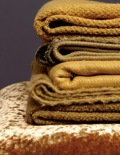
| Original color of the item | Color of dye used | Color obtained after repainting |
|
red |
Red | Red |
| Blue | Purple, cherry | |
| Yellow | Orange | |
| Brown | Red-brown | |
| Green | Brown | |
| Violet | Red-violet | |
| Grey | Dark red | |
|
blue |
Red | Violet |
| Blue | Blue | |
| Yellow | Green | |
| Brown | Dark brown | |
| Green | Blue-green | |
| Violet | Blue-violet | |
| Grey | Gray blue | |
|
yellow |
Red | Orange |
| Blue | Green | |
| Yellow | Yellow | |
| Brown | Yellow-brown | |
| Green | Light green | |
| Violet | Dirty blue | |
| Grey | Pea | |
|
brown |
Red | Red-brown |
| Blue | Dark brown | |
| Yellow | Yellow-brown | |
| Brown | Brown | |
| Green | Olive green | |
| Violet | Dark brown | |
| Grey | Brown | |
|
green |
Red | Brown |
| Blue | Blue-green | |
| Yellow | Light green | |
| Brown | Olive green | |
| Green | Green | |
| Violet | Dark green | |
| Grey | Gray-green | |
|
violet |
Red | Red-violet |
| Blue | Blue-violet | |
| Yellow | Dirty blue | |
| Brown | Dark brown | |
| Green | Green | |
| Violet | Violet | |
| Grey | Gray-violet | |
|
grey |
Red | Dark red |
| Blue | Gray blue | |
| Yellow | Pea | |
| Brown | Brown | |
| Green | Gray-green | |
| Violet | Gray-violet | |
| Grey | Grey | |
To dye fabric, you need to pour the dye from the bag into a clean cloth and dissolve it in a small amount of hot water. Then add water and place the item in an enamel bowl. After heating for fifteen minutes, add 3 full tablespoons of table salt to the dye bath, while lifting the item with a stick. From time to time the item is moved, making sure that it is completely immersed in the solution, and boiled for another half hour. The painted item is removed only after the dye solution has cooled.
Usually, when dyeing correctly, the solution will become very discolored. Rinse first in warm water then in cold water until the water is clear. It is recommended that after rinsing, wash the dyed item in warm soapy water and rinse again. You need to dry it by hanging it on a hanger. It should be hung on a rope along the warp threads, being careful not to warp. It is not recommended to use clothespins as they may leave stains.














